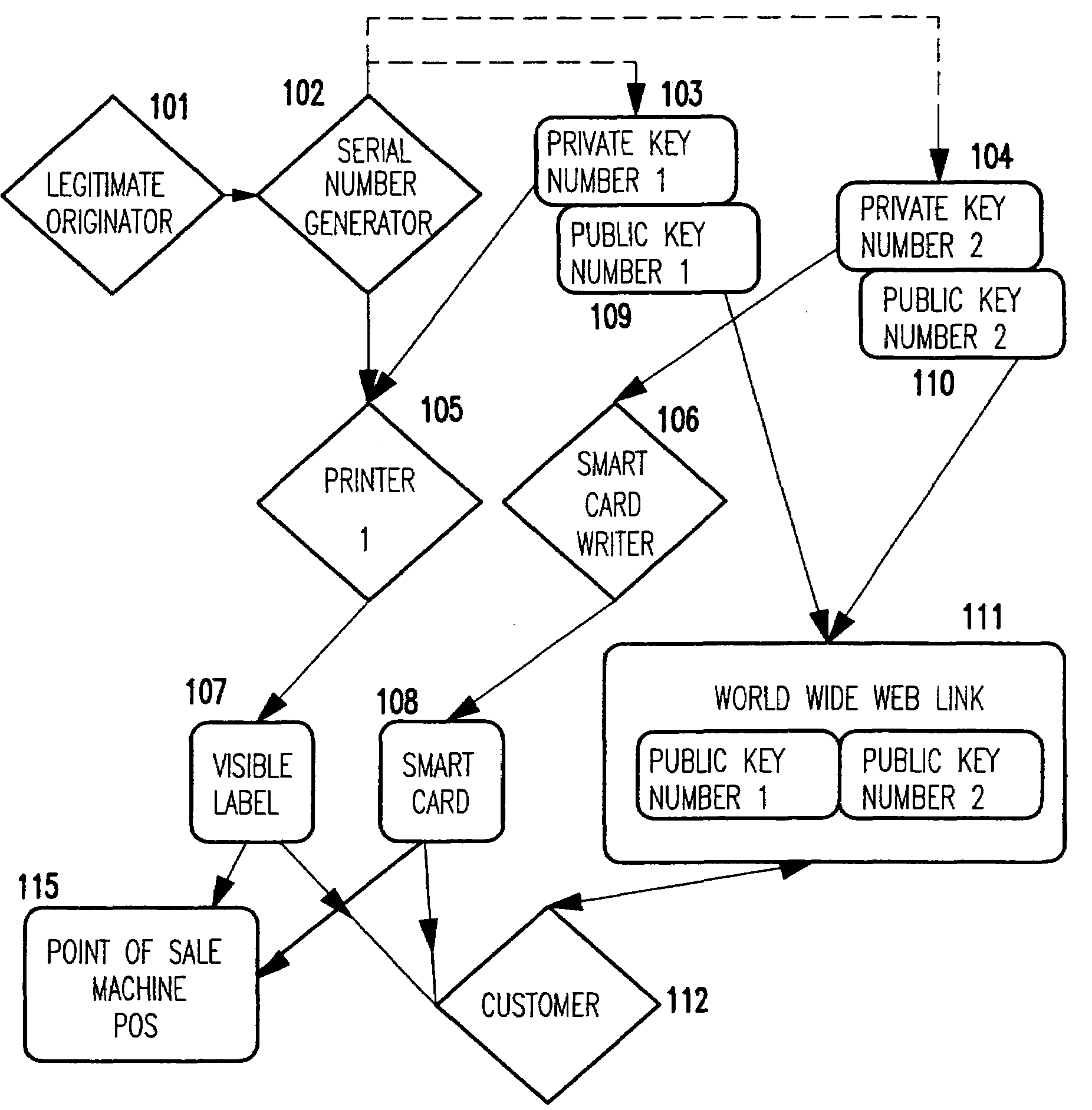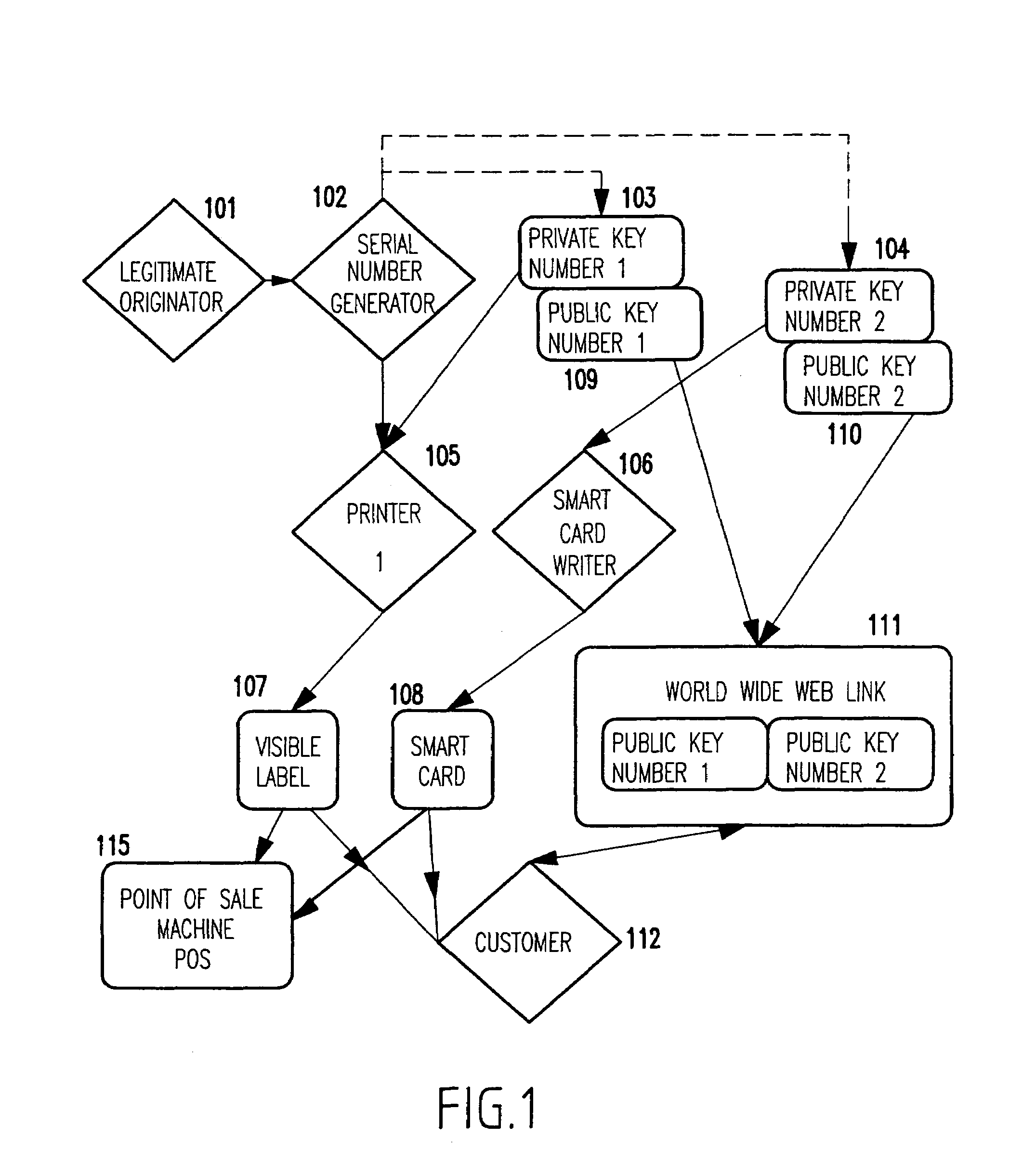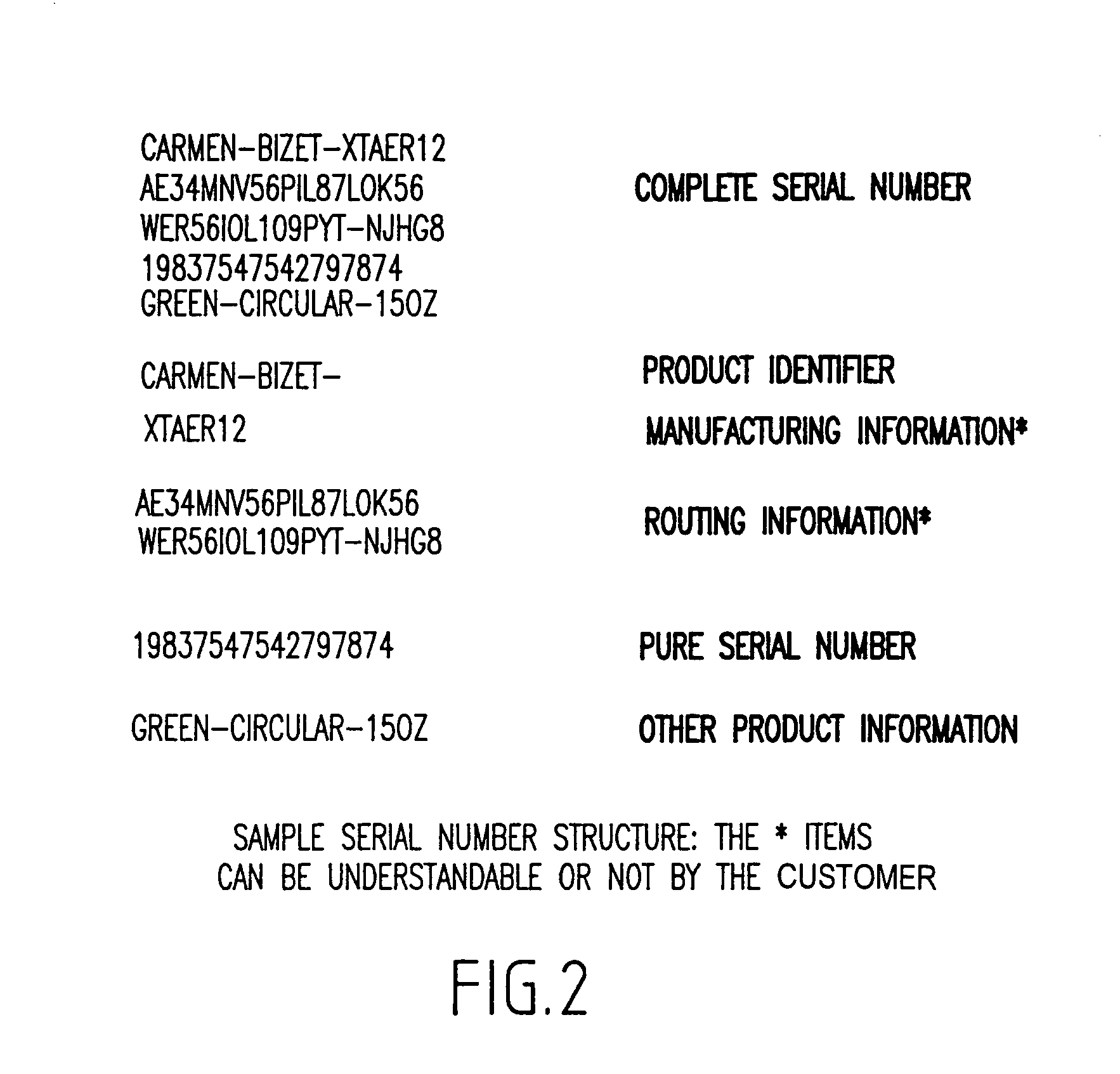System for protection of goods against counterfeiting
a technology for counterfeit goods and goods, applied in the field of authenticating consumer goods, can solve the problems of counterfeit goods costing billions of dollars a year to companies around the world in lost sales, counterfeit goods tarnish the reputations of legitimate producers, consumers and producers both suffer counterfeiting, etc., and achieve the effect of quick verification of information
- Summary
- Abstract
- Description
- Claims
- Application Information
AI Technical Summary
Benefits of technology
Problems solved by technology
Method used
Image
Examples
Embodiment Construction
[0022]Referring now to the drawings, and more particularly to FIG. 1 there is shown a block diagram of a first embodiment of the present invention. A legitimate manufacturer 101 commands a serial number generator 102 to generate sequences of serial numbers. These serial numbers can be just consecutive numbers, or contain uncoded and / or coded information as exemplified in FIG. 2. The legitimate manufacturer 101 also possesses private keys, 103 and 104, and the corresponding public keys, 109 and 110, from private key / public key pairs as available now in many forms.
[0023]Public key encryption involves the use of private / public key pairs. The private key is known only to the manufacturer. Using a corresponding public key provided by the manufacturer, the consumer or law enforcement agent can verify that the encrypted version matches the serial number. An advantage to this method is that only the manufacturer can produce matching pairs. The wide spread availability of the public key does...
PUM
 Login to View More
Login to View More Abstract
Description
Claims
Application Information
 Login to View More
Login to View More - R&D
- Intellectual Property
- Life Sciences
- Materials
- Tech Scout
- Unparalleled Data Quality
- Higher Quality Content
- 60% Fewer Hallucinations
Browse by: Latest US Patents, China's latest patents, Technical Efficacy Thesaurus, Application Domain, Technology Topic, Popular Technical Reports.
© 2025 PatSnap. All rights reserved.Legal|Privacy policy|Modern Slavery Act Transparency Statement|Sitemap|About US| Contact US: help@patsnap.com



